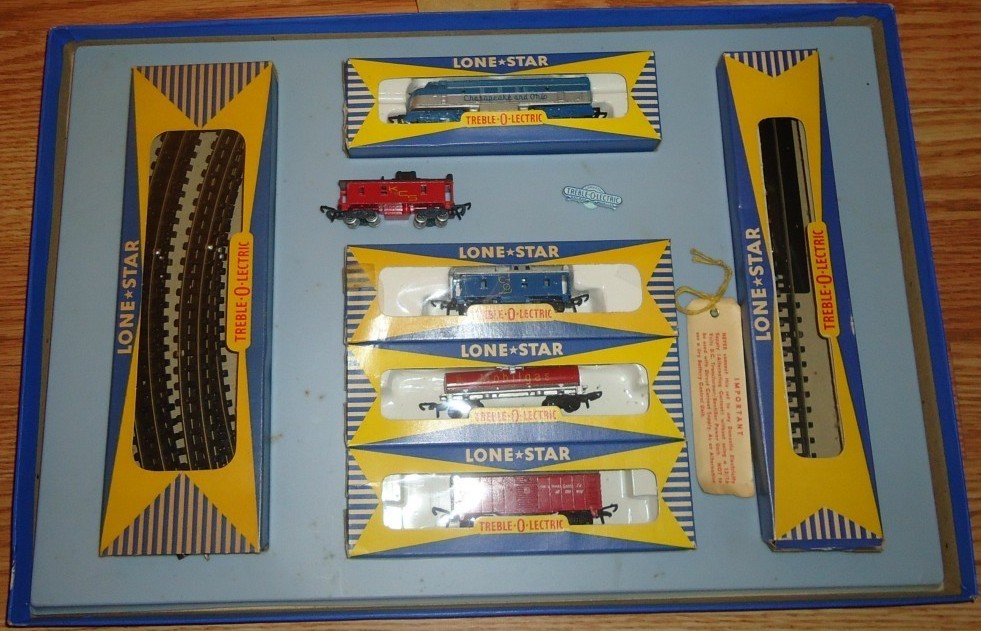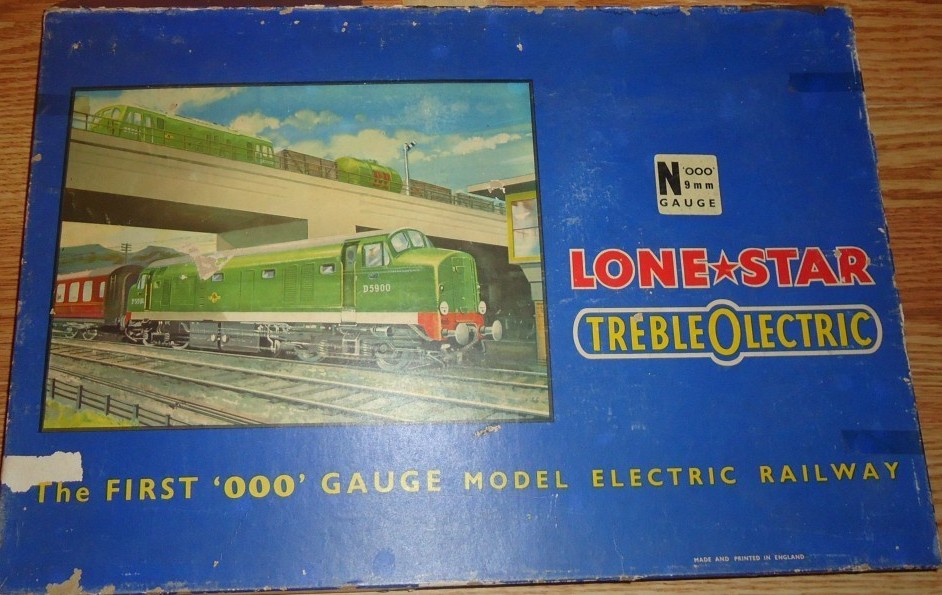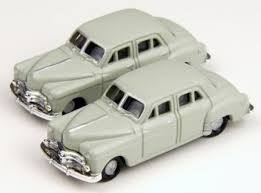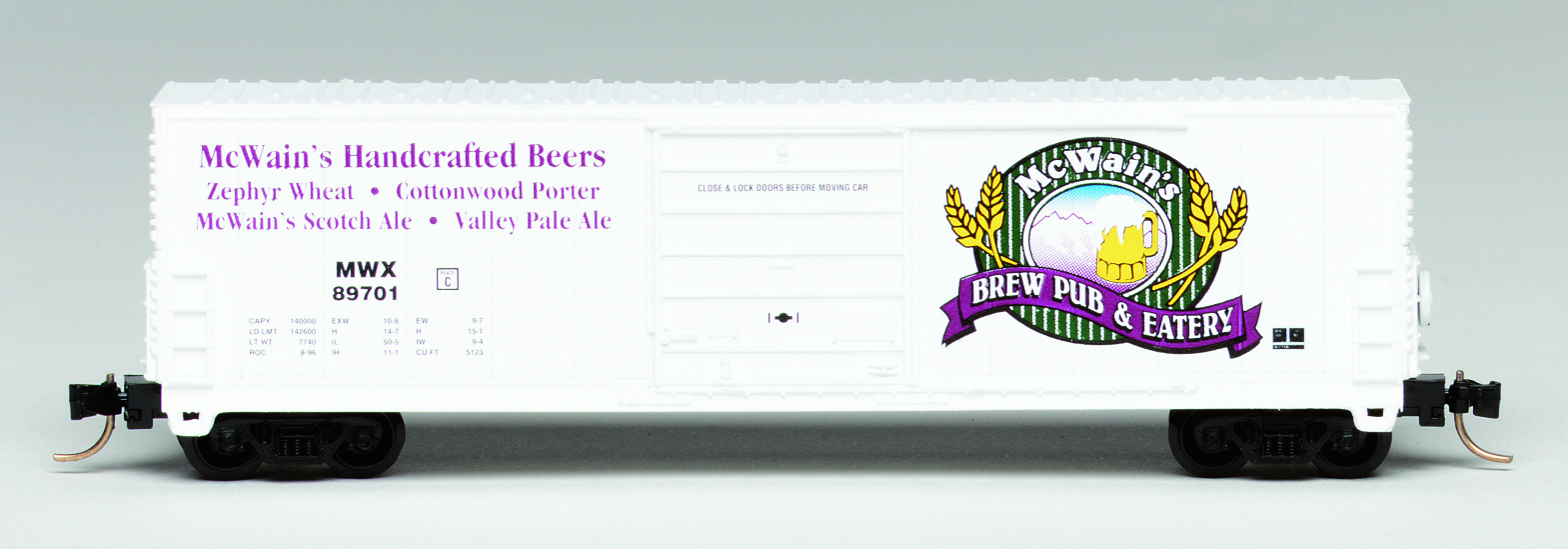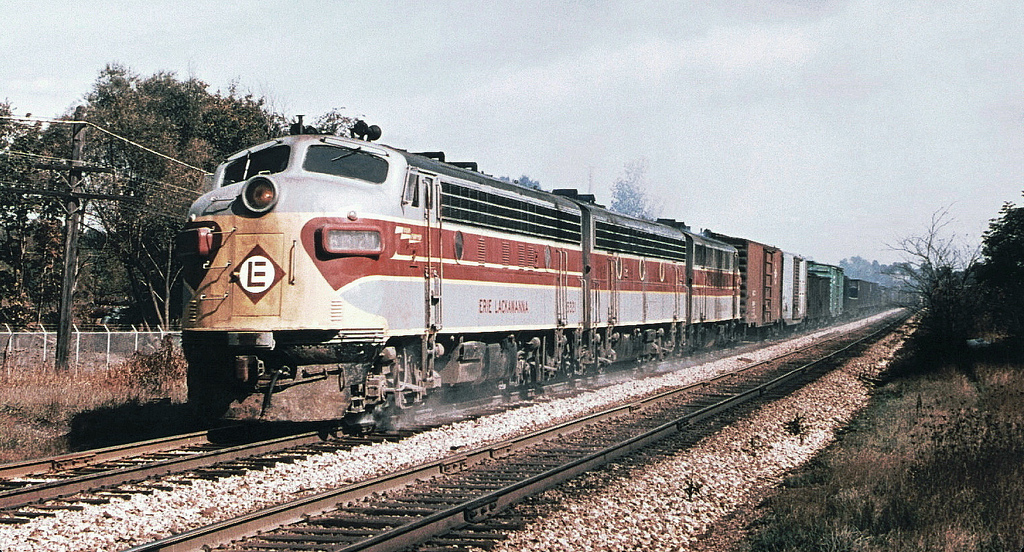Prototype History: A freight train or goods train is a group of freight cars (US) or goods wagons (International Union of Railways) hauled by one or more locomotives on a railway, transporting cargo all or some of the way between the shipper and the intended destination as part of the logistics chain. Trains may haul bulk material, intermodal containers, general freight or specialized freight in purpose-designed cars. Rail freight practices and economics vary by country and region.
Diesel engines during the transition era were relatively primitive compared to their modern equivalents. Canada, Mexico and the United States are connected by an extensive, unified standard gauge rail network. Partially from Wikipedia
Diesel engines during the transition era were relatively primitive compared to their modern equivalents. Canada, Mexico and the United States are connected by an extensive, unified standard gauge rail network. Partially from Wikipedia
Road Name History:  The Chesapeake and Ohio Railway (reporting marks C&O, CO) was a Class I railroad formed in 1869 in Virginia from several smaller Virginia railroads begun in the 19th century. Led by industrialist Collis P. Huntington, it reached from Virginia's capital city of Richmond to the Ohio River by 1873, where the railroad town (and later city) of Huntington, West Virginia was named for him.
The Chesapeake and Ohio Railway (reporting marks C&O, CO) was a Class I railroad formed in 1869 in Virginia from several smaller Virginia railroads begun in the 19th century. Led by industrialist Collis P. Huntington, it reached from Virginia's capital city of Richmond to the Ohio River by 1873, where the railroad town (and later city) of Huntington, West Virginia was named for him.
Tapping the coal reserves of West Virginia, the C&O's Peninsula Extension to new coal piers on the harbor of Hampton Roads resulted in the creation of the new City of Newport News. Coal revenues also led the forging of a rail link to the Midwest, eventually reaching Columbus, Cincinnati and Toledo in Ohio and Chicago, Illinois.
By the early 1960s the C&O was headquartered in Cleveland, Ohio, USA. In 1972, under the leadership of Cyrus Eaton, it became part of the Chessie System, along with the Baltimore and Ohio and Western Maryland Railway. The Chessie System was later combined with the Seaboard Coast Line and Louisville and Nashville, both the primary components of the Family Lines System, to become a key portion of CSX Transportation (CSXT) in the 1980s. A substantial portion of Conrail was added in 1999.
C&O's passenger services ended in 1971 with the formation of Amtrak. Today Amtrak's tri-weekly Cardinal passenger train follows the historic and scenic route of the C&O through the New River Gorge in one of the more rugged sections of the Mountain State. The rails of the former C&O also continue to transport intermodal and freight traffic, as well as West Virginia bituminous coal east to Hampton Roads and west to the Great Lakes as part of CSXT, a Fortune 500 company which was one of seven Class I railroads operating in North America at the beginning of the 21st century.
At the end of 1970 C&O operated 5067 miles of road on 10219 miles of track, not including WM or B&O and its subsidiaries.
Read more on Wikipedia.

Tapping the coal reserves of West Virginia, the C&O's Peninsula Extension to new coal piers on the harbor of Hampton Roads resulted in the creation of the new City of Newport News. Coal revenues also led the forging of a rail link to the Midwest, eventually reaching Columbus, Cincinnati and Toledo in Ohio and Chicago, Illinois.
By the early 1960s the C&O was headquartered in Cleveland, Ohio, USA. In 1972, under the leadership of Cyrus Eaton, it became part of the Chessie System, along with the Baltimore and Ohio and Western Maryland Railway. The Chessie System was later combined with the Seaboard Coast Line and Louisville and Nashville, both the primary components of the Family Lines System, to become a key portion of CSX Transportation (CSXT) in the 1980s. A substantial portion of Conrail was added in 1999.
C&O's passenger services ended in 1971 with the formation of Amtrak. Today Amtrak's tri-weekly Cardinal passenger train follows the historic and scenic route of the C&O through the New River Gorge in one of the more rugged sections of the Mountain State. The rails of the former C&O also continue to transport intermodal and freight traffic, as well as West Virginia bituminous coal east to Hampton Roads and west to the Great Lakes as part of CSXT, a Fortune 500 company which was one of seven Class I railroads operating in North America at the beginning of the 21st century.
At the end of 1970 C&O operated 5067 miles of road on 10219 miles of track, not including WM or B&O and its subsidiaries.
Read more on Wikipedia.
Brand/Importer Information: Lone Star was founded by Aubrey Robert Mills and Sidney James Ambridge in 1939 as the toy division of Die Casting Machine Tools Ltd. (DCMT) of London. DCMT was manufacturing diecasting machines and equipment. DCMT had made some toy cars for Crescent, and diecast toy cap-firing guns, which DCMT supplied under the "Lone Star" brand. "Lone Star" was a name that conjured up images of the Wild West, and while it was a reference to the Texas state flag (with its single star), the name also reminded children of the star-shaped Sheriff's badge that was often a key part of a cowboy costume.
Lone Star Locos appeared in the late 1950s as a range of fairly basic 000-scale diecast miniature trains and track, and were joined in the 1960s by the comparatively short-lived "Treble-O-Lectric" range of "proper" motorised 000-scale electric train sets. The motorised range was discontinued circa 1965. DCMT ceased its operation circa 1988.
The Lone Star Treble-O (triple O) rolling stock was scaled to 2mm to the foot (1:152) and track's gauge was 9mm.
Lone Star paved the way to the N scale model trains that would be soon after introduced by Arnold Rapido.
Read more on Irwin's Journal and on The Brighton Toy and Model Index.
Lone Star Locos appeared in the late 1950s as a range of fairly basic 000-scale diecast miniature trains and track, and were joined in the 1960s by the comparatively short-lived "Treble-O-Lectric" range of "proper" motorised 000-scale electric train sets. The motorised range was discontinued circa 1965. DCMT ceased its operation circa 1988.
The Lone Star Treble-O (triple O) rolling stock was scaled to 2mm to the foot (1:152) and track's gauge was 9mm.
Lone Star paved the way to the N scale model trains that would be soon after introduced by Arnold Rapido.
Read more on Irwin's Journal and on The Brighton Toy and Model Index.
Item created by: james13pugh on 2022-04-29 17:39:10. Last edited by Alain LM on 2022-04-29 17:54:59
If you see errors or missing data in this entry, please feel free to log in and edit it. Anyone with a Gmail account can log in instantly.
If you see errors or missing data in this entry, please feel free to log in and edit it. Anyone with a Gmail account can log in instantly.


